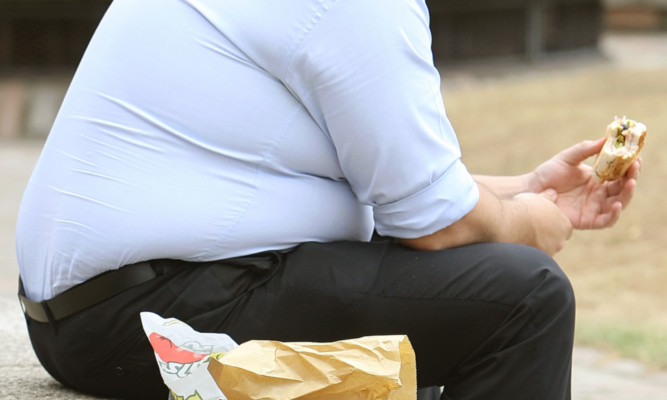Scientists have identified six types of obese people.
A study suggested people with a body mass index (BMI) of 30 or more fall into six categories: heavy drinking males; young healthy females; the affluent and healthy elderly; the physically sick but happy elderly; the unhappy and anxious middle-aged; and those with the poorest health.
Researchers said their findings suggest that clinicians and policy makers should not target obese individuals as a whole, but treat them according to which “type” they belong to.
The study, led by the University of Sheffield, analysed people with a body mass index (BMI) of 30 or above – anyone who is 30 or more is classed as obese.
The method has long been used to measure individuals in terms of their height and weight, but does not account for variation across other factors such as health, demographic and behavioural characteristics.
To carry out their research, the team looked at health-related variables such as whether the individuals reported conditions like fatigue, pain, insomnia, depression, diabetes, high blood pressure, heart disease or cancer.
Demographic variables included were their age, sex, ethnicity and socioeconomic deprivation, while their well-being was assessed by asking them how satisfied they were with their lives on a scale of nought to 10.
Whether they smoked, the number of units of alcohol consumed in the previous week, how often they were active, and whether they engaged in active weight management such as going to slimming clubs and making a conscious effort to eat more healthily were also taken into account in working out what type they were.
The study found the largest cluster was “younger healthy females”, which was also the youngest group. They displayed the most positive health characteristics of all the clusters and engaged in some healthy behaviours.
“Heavy drinking males” showed similar characteristics except with respect to their high alcohol consumption. This group were also less likely to be managing their weight, although they did report above average levels of physical exercise and walking.
The “unhappy anxious middle-aged” group was primarily female, had poor mental health and reported high levels of insomnia, anxiety, depression and fatigue.
Their sense of well-being was relatively low, but they did engage in healthy physical activity and weight management, and had the lowest alcohol consumption.
The final three clusters captured different patterns amongst older people.
The “affluent healthy elderly” was the least deprived cluster and had positive health characteristics (although included a large proportion with high blood pressure) and above average alcohol consumption.
The “physically sick but happy elderly” group had a higher prevalence of chronic health conditions (including osteoarthritis, diabetes and high blood pressure) but exhibited low levels of anxiety and depression.
The final group, made up of those with the “poorest health”, was the most deprived, had the highest prevalence of most chronic health conditions, and tended not to engage in healthy behaviours. It also had the highest mean BMI.
Researchers said health professionals should assess what group obese patients might fall into and treat them accordingly.
For example, for the “unhappy anxious middle-aged” an intervention involving increasing exercise may need to be mixed with psycho-social counselling, while for those in the “poorest health”, group advice on exercise may not be reasonable and more modest goals may be needed.
Meanwhile messages about alcohol reduction could help tackle obesity in young adults.
The study was led by Dr Mark Green from the university’s School of Health and Related Research, who said: “Policies designed to tackle obesity and encourage healthier lifestyles often target individuals just because they are obese.
“But a focus on just the group as a whole is not very efficient. We are all different and different health promotion approaches work for different people.
“Our research showed that those in the groups that we identified are likely to need very different services, and will respond very differently to different health promotion policies.
“In the future, we hope that GPs will keep in mind these six groups when offering advice to their patients.”
The findings are published in the Journal of Public Health.
